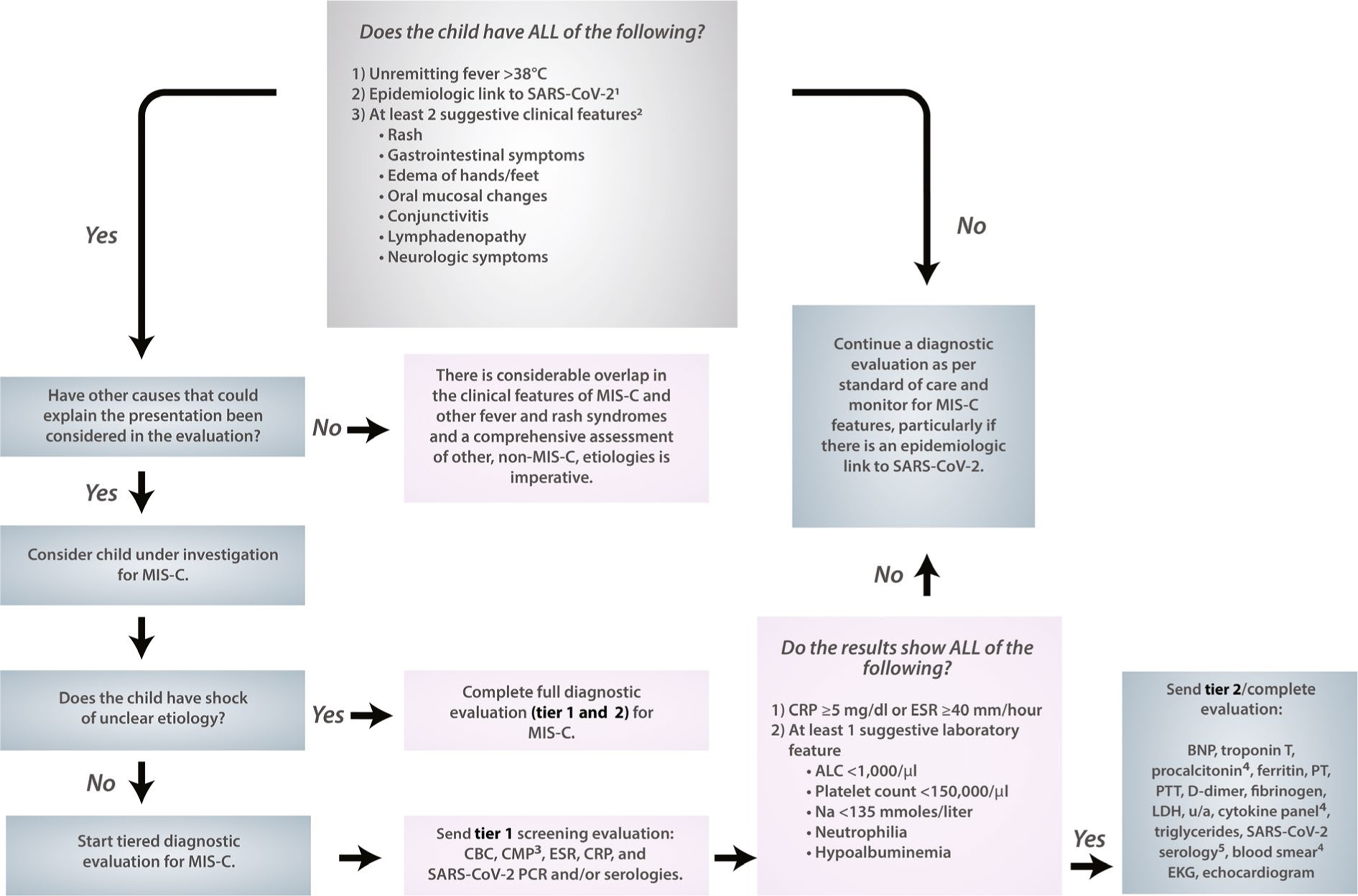Figure 1.

Diagnostic pathway for multisystem inflammatory syndrome in children (MIS-C). Moderate-to-high consensus was reached by the Task Force in the development of this diagnostic pathway for MIS-C associated with severe acute respiratory syndrome coronavirus 2 (SARS–CoV-2). 1An epidemiologic link to SARS–CoV-2 infection is defined as a child with any of the following criteria: positive for SARS–CoV-2 by polymerase chain reaction (PCR), positive for SARS–CoV-2 by serology, preceding illness resembling coronavirus disease 2019 (COVID-19), or close contact with an individual with confirmed or suspected COVID-19 in the past 4 weeks. 2Suggestive clinical features include rash (polymorphic, maculopapular, or petechial, but not vesicular), gastrointestinal symptoms (diarrhea, abdominal pain, or vomiting), oral mucosal changes (red and/or cracked lips, strawberry tongue, or erythema of the oropharyngeal mucosa), conjunctivitis (bilateral conjunctival infection without exudate), and neurologic symptoms (altered mental status, encephalopathy, focal neurologic deficits, meningismus, or papilledema). 3The complete metabolic panel (CMP) includes measurement of sodium, potassium, carbon dioxide, chloride, blood urea nitrogen, creatinine, glucose, calcium, albumin, total protein, aspartate aminotransferase, alanine aminotransferase, alkaline phosphatase, and bilirubin. 4Procalcitonin, cytokine panel, and blood smear test results should be sent, if available. 5Serologic test results should be sent if not sent in tier 1 evaluation, and if possible, SARS–CoV-2 IgG, IgM, and IgA test results should be sent. CRP = C-reactive protein; ESR = erythrocyte sedimentation rate; ALC = absolute lymphocyte count; CBC = complete blood cell count; BNP = B-type natriuretic peptide; PT = prothrombin time; PTT = partial thromboplastin time; LDH = lactate dehydrogenase; u/a = urinalysis; EKG = electrocardiogram.
